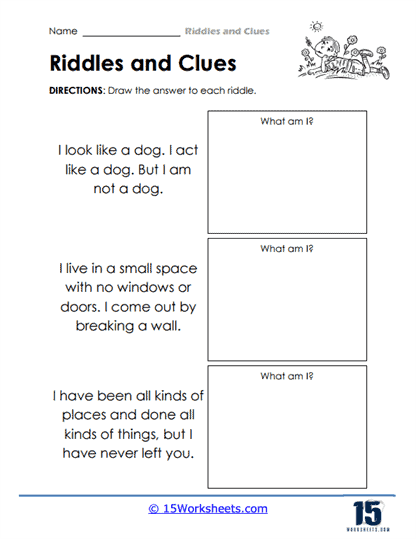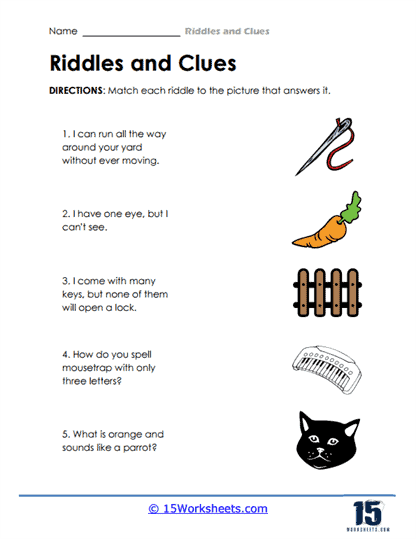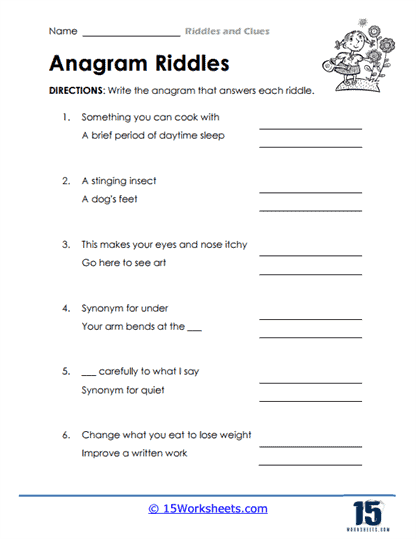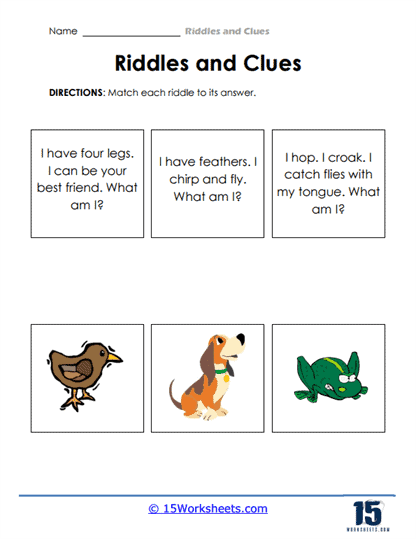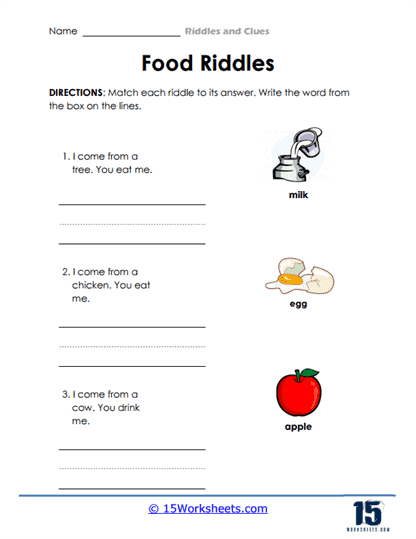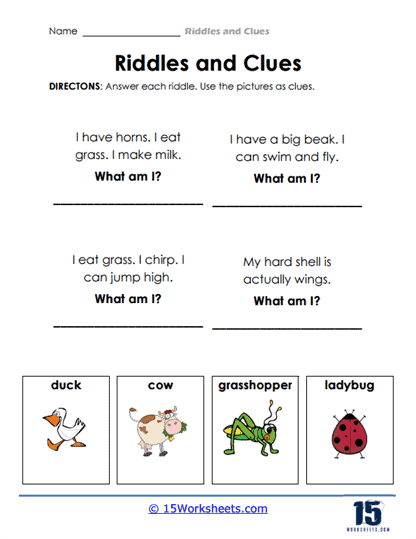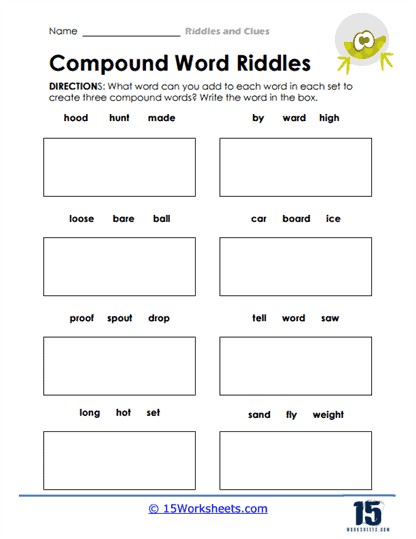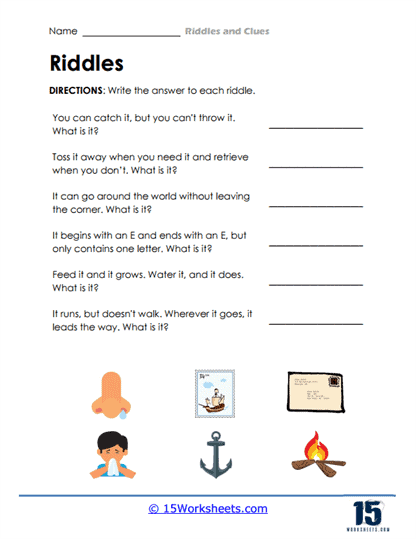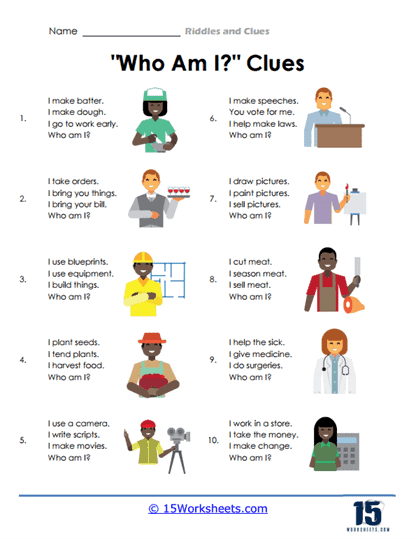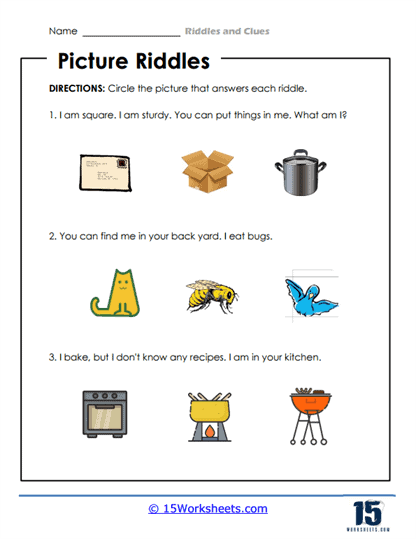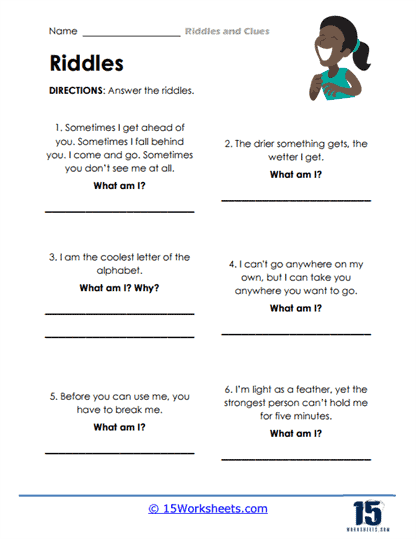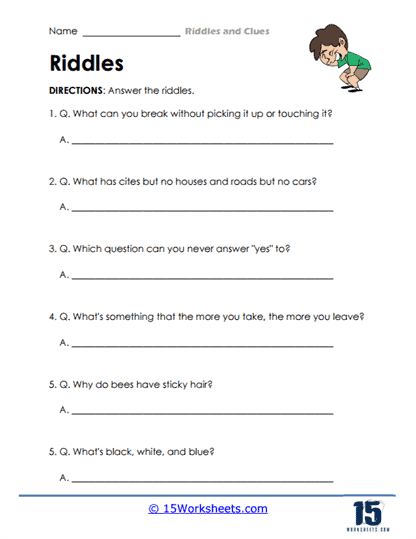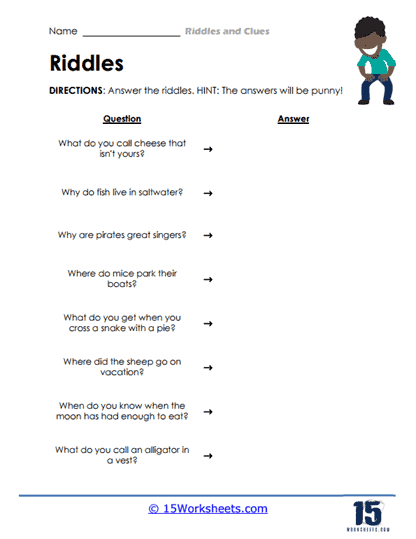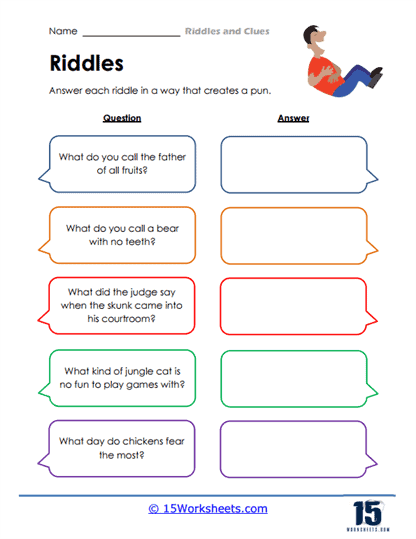Riddles and Clues Worksheets
All About These 15 Worksheets
This series of 15 worksheets on Riddles and Clues is designed to engage students in critical thinking, problem-solving, and creative reasoning. Riddles and clues challenge them to think outside the box, make logical connections, and decipher hidden meanings. These worksheets provide students with a collection of riddles and clues that range in difficulty, allowing them to develop their deductive and analytical skills. By engaging with these worksheets, students can enhance their cognitive abilities, strengthen their problem-solving techniques, and foster a sense of curiosity and excitement. Through these worksheets, students will:
- Think critically, consider different perspectives, and use deductive reasoning to unravel the answers to engaging riddles;
- Analyze patterns and approach problems from multiple angles, fostering a deeper level of critical thinking;
- Demonstrate linguistic creativity and critical thinking to decipher clever wordplay and arrive at the correct answers;
- And decipher metaphorical language, understand word associations, and think abstractly to solve the puzzles presented by cryptic clues.
This series of worksheets on Riddles and Clues offers students an engaging and interactive way to develop critical thinking, problem-solving, and creative reasoning skills. By engaging with these worksheets, they can sharpen their deductive and analytical abilities, enhance their cognitive flexibility, and foster a sense of curiosity and excitement in problem-solving.
Riddles and clues provide a fun and stimulating avenue for students to exercise their minds and challenge themselves intellectually. Overall, these worksheets encourage students to think outside the box, make connections, and embrace the thrill of unraveling mysteries through their critical thinking prowess.
The Best Way to Solve a Riddle
Riddles are as old as time. Since they’re a fun way of working your brain, they’ve passed the tests of time and continue to be an engaging party trick. Many people are fascinated with how imaginative a riddle can be, but riddles have evolved drastically. In today’s day and age, riddles rely mostly on double-meaning and wordplay.
Without having some skill and a lot of thinking, solving one can be difficult. However, some ways of solving riddles may prove to be more effective than several others. Read on as we take you through the best way to solve a riddle.
Solving a Riddle: A Fool-Proof Process
1. Acknowledging the Trickery
The most crucial aspect you need to remember while solving a riddle is that it’s supposed to trick you. When you have that in mind, start looking for any misleading language clues or words that may have a double meaning. Throughout this process, you must guard your conscious from any assumptions.
A riddle will be made up of a few lines in most cases. One way of simplifying the process is to break a riddle down into a manageable chunk.
2. Focus on Every Element
Now that you’ve divided the clues or the different parts of the riddle, you have to focus on every part individually. Can you come up with any potential answers? In several instances, a riddle may have a misleading clue that is supposed to look like a clue when it’s only there to waste your time.
Consider this example: What can always run but is never able to walk?
One of the most puzzling aspects of a riddle is its ability to give human characteristics to an inanimate object. That’s what’s going to happen here, too. Whenever you hear the words run or walk, you instantly start thinking of an animal or a person.
But this is when you start focusing on the first rule. Wouldn’t the answer be too obvious if the answer was an animal or a person? Think about the two clues you have. With some aggressive brainstorming, it may come to your mind that the riddle is talking about an object.
The electronics that we use can run, but they can’t walk. Water can run, too, but it can’t walk either. This is why you need to dissect every keyword.
3. Accepting That There is No “Right” Solution
While riddles that have words can be tricky, riddles with numbers can be a nightmare for several people. The critical thing to remember amidst this process is that there is no definite way to know if you’ve solved a riddle the right way. A riddle that’s supposed to be “math-intensive” isn’t too heavily focused on the numbers. Once again, you’ll have to read between the lines to make sense of the question being asked.
While it may sound cliched, thinking outside the box is essential. The sole reason riddles make you work your brain is because they’re supposed to be solved with a distinct thought process. One that we don’t adopt on a daily.
Solving a riddle becomes easier once you stop walking on the traditional pathway, solving a riddle becomes easier.

